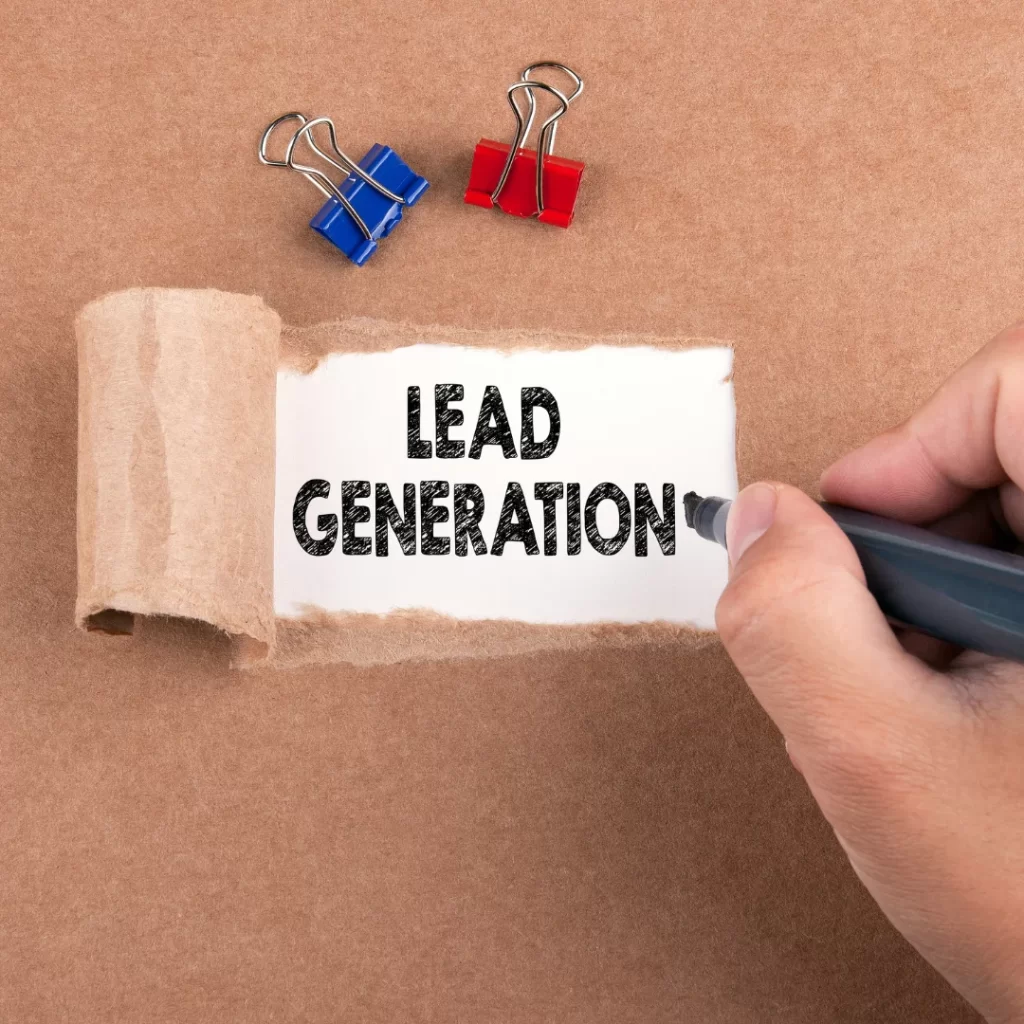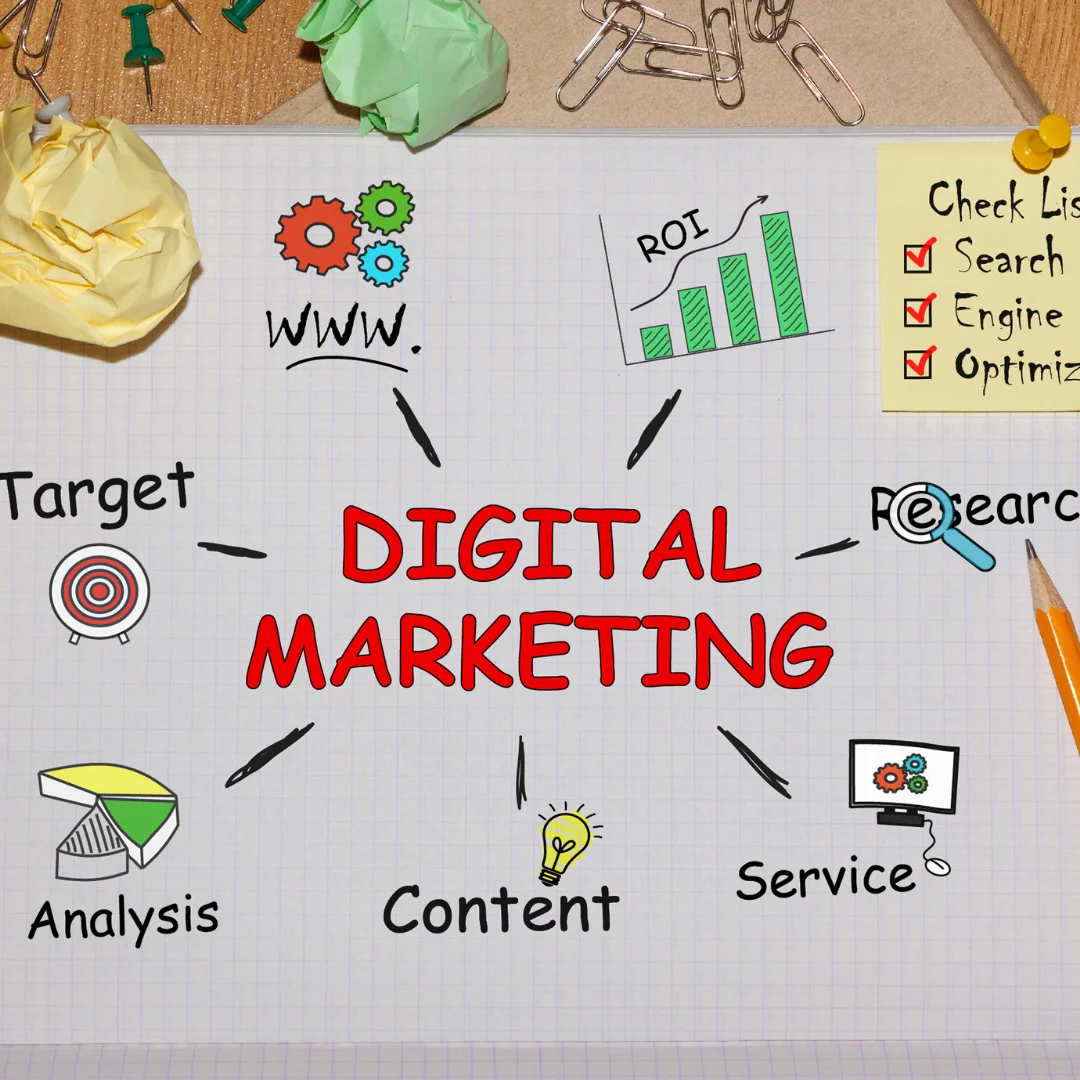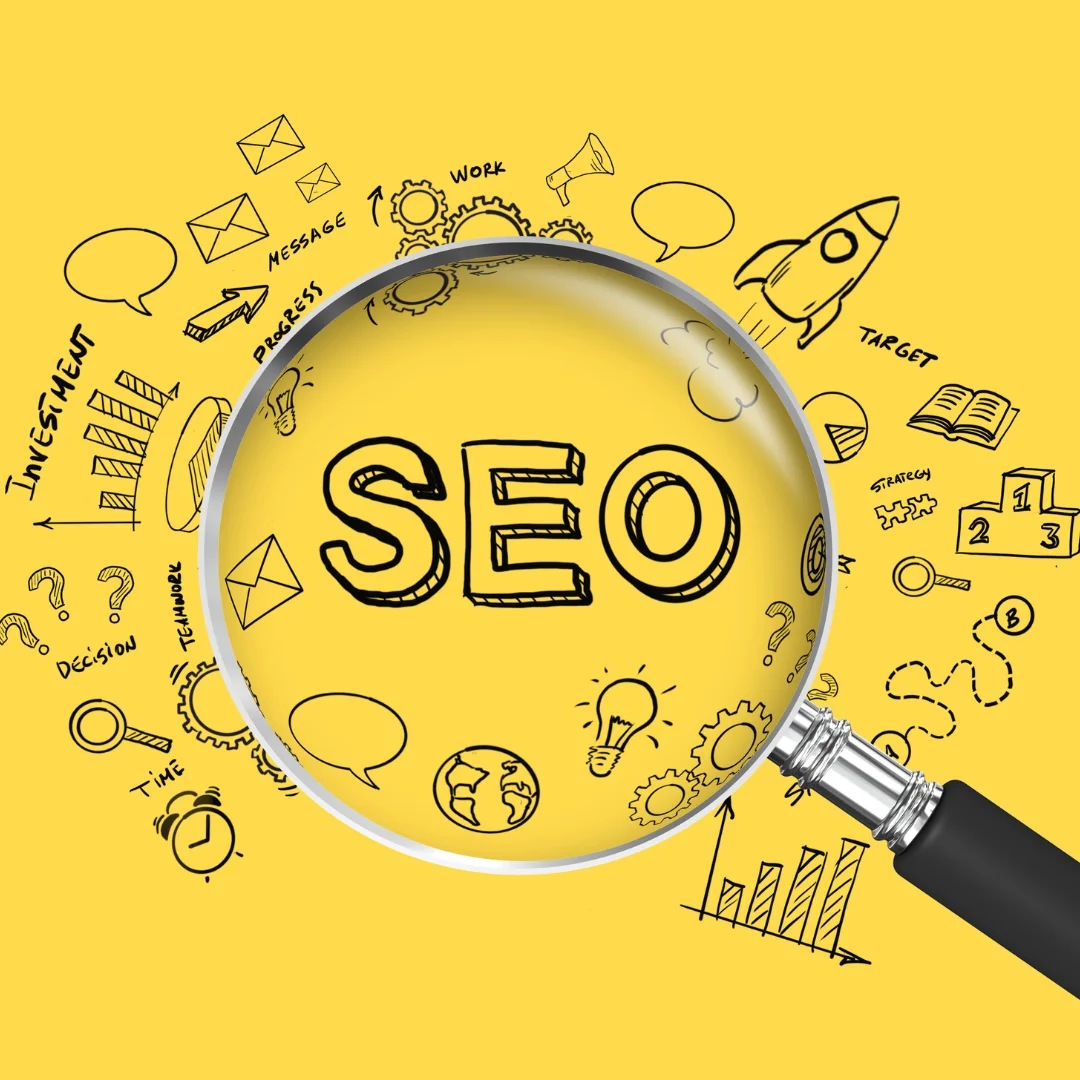Let’s face it: lead generation is the lifeblood of your business. Without it, you’re just shouting into the social media void, hoping someone—anyone—cares. Spoiler alert: they don’t. Not unless you give them a reason to.
Social media in 2025 is like a crowded marketplace where every marketer is a screaming vendor. Your challenge? To be the vendor with the juiciest, most irresistible fruit (read: leads). This guide is here to help you become that vendor—minus the screaming.
Over the next few minutes, you’ll learn how to craft the perfect bait for your ideal customers, optimize your online presence, and avoid common mistakes that make your audience hit the “mute” button faster than you can say “algorithm change.”
What You’ll Learn
- The 10 best tips for crushing lead generation on social media in 2025.
- How to use humor, wit, and authenticity to stand out (because boring content is so 2020).
- Real, actionable strategies, from leveraging lead magnets to mastering analytics tools.
Let’s dive in and make your lead generation efforts not just effective—but downright magnetic.
Understanding Lead Generation
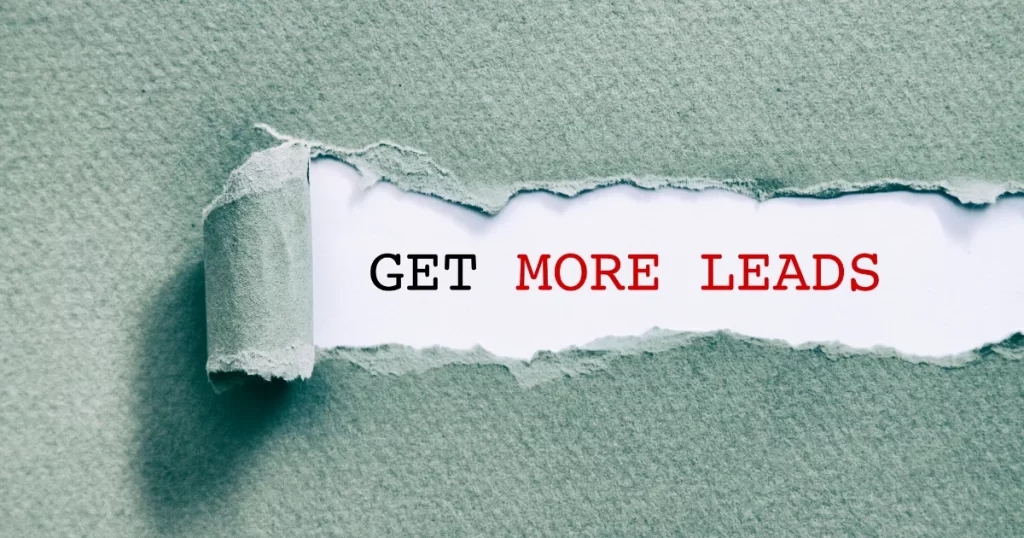
Let’s get one thing straight: lead generation isn’t just a buzzword your marketing team throws around to sound busy. It’s the bread and butter of any business that wants to thrive rather than just exist. Think of it as matchmaking, but instead of setting up two friends, you’re pairing your business with customers who might actually want to swipe right on what you’re offering.
What Is Lead Generation (And Why Should You Care)?
In simple terms, lead generation is the process of attracting and converting strangers into potential customers. It’s the difference between standing on a street corner yelling, “Buy my stuff!” and having a line of people knocking on your door, asking for what you’re selling. One screams desperation; the other screams success.
Without lead generation, your sales team would be sitting around debating whether pineapple belongs on pizza (it doesn’t, but that’s another article). Leads give your business purpose, direction, and most importantly, revenue. They’re the people who express interest in your product or service, and they’re the lifeblood of your sales funnel.
But here’s the kicker: not all leads are created equal. Some are worth their weight in gold, and others… well, let’s just say they need a little more nurturing before they’re ready to open their wallets.
Inbound vs. Outbound: What’s Your Flavor?
When it comes to generating leads, there are two schools of thought: inbound and outbound. Both are effective in their own way, and which one you choose depends on your business, your audience, and, let’s be honest, your patience level.
Inbound Lead Generation
Inbound is all about being the irresistible flame to your customers’ moth. Instead of chasing prospects down, you’re creating valuable content and experiences that draw them to you. Think of it like hosting an epic party—your killer blog posts, engaging videos, and webinars are the snacks and music that keep people coming back for more.
- Examples of Inbound Lead Generation:
- Writing an SEO-optimized blog post about “10 Best Tips for Quality Lead Generation” (meta, right?).
- Posting engaging social media content that makes people think, “Wow, this brand gets me!”
- Hosting webinars that solve real problems for your target audience.
Inbound is perfect for building trust and long-term relationships, but it’s not exactly a quick fix. It’s like planting a garden: you sow the seeds, water them, and wait patiently for them to bloom. But when they do? Oh, it’s worth it.
Outbound Lead Generation
Outbound is the direct approach. You’re not waiting for leads to come to you; you’re going out there and grabbing their attention. This is the business equivalent of sliding into someone’s DMs—bold, a little risky, but often effective.
- Examples of Outbound Lead Generation:
- Sending cold emails to potential clients.
- Running paid ads on social media platforms like Facebook and LinkedIn.
- Picking up the phone and making cold calls (yes, people still do this).
Outbound is faster and often more immediate than inbound, but it can feel a bit intrusive if not done right. It’s like showing up at someone’s house uninvited—you might get in, but you better have a good reason for being there.
Types of Leads: Know Who You’re Dealing With
Not all leads are cut from the same cloth. Some are warm and fuzzy, ready to jump into your sales funnel. Others are cold and distant, making you work for every inch of progress. Let’s break them down:
Marketing Qualified Leads (MQLs)
MQLs are the flirty leads. They’re interested, but they’re not ready to go all the way just yet. They’ve clicked on your ad, downloaded your ebook, or signed up for your newsletter, but they’re still weighing their options. Think of them as the “it’s complicated” status in your lead relationship.
- How to Handle MQLs: Nurture them with valuable content. Keep the conversation going without being pushy. They’re watching, and when the time is right, they’ll make their move.
Sales Qualified Leads (SQLs)
SQLs are the leads your sales team dreams about. They’re hot, ready, and waiting for someone to close the deal. They’ve shown clear intent to buy, whether by filling out a demo request form or outright saying, “Take my money!”
- How to Handle SQLs: Strike while the iron is hot. These leads need quick follow-up and a clear sales pitch. Don’t let them cool off, or they might move on to your competitors.
Product Qualified Leads (PQLs)
PQLs are the unicorns of lead generation. They’ve tried your product—maybe a free trial or a freemium version—and they like what they see. These leads are as good as gold because they’ve already experienced the value you provide.
- How to Handle PQLs: Highlight the benefits of upgrading or purchasing the full version. Use their existing experience as a springboard to show how your product can solve more of their problems.
Why Knowing the Difference Matters
Understanding the types of leads you’re dealing with isn’t just good practice—it’s essential for your sanity. Treating an MQL like an SQL is the fastest way to scare them off, while neglecting a PQL could mean missing out on an easy win. Tailor your approach to each lead type, and you’ll see better results—and fewer frustrated salespeople.
1. Leverage Compelling Lead Magnets

What Are Lead Magnets (and Why Should You Care)?
Imagine trying to catch a fish with your bare hands. Sure, it’s possible, but wouldn’t you rather use bait that makes them practically jump into your net? That’s what lead magnets are—irresistible offers that lure potential leads right where you want them. The better your bait, the more fish (read: leads) you’ll catch. Without them, you’re just yelling into the void, hoping someone will care.
What Works (and What Doesn’t)
Not all lead magnets are created equal. Some are golden tickets, while others are just… meh. Here’s what works:
The Winners
- Free Ebooks: People love free stuff, especially if it makes them feel smarter. A well-crafted ebook like “10 Secrets to Mastering Lead Generation” can do wonders.
- Exclusive Webinars: Position your webinar as the key to unlocking their potential. Bonus points if it has a snazzy title like, “How to Generate 100 Leads in 10 Days Without Losing Your Mind.”
- Industry Cheat Sheets: Quick, actionable, and to the point—cheat sheets are perfect for those who want answers yesterday.
The Duds
- Generic PDFs: No one wants to download a document that screams, “I made this in 15 minutes.”
- Overused Templates: If your template is the same one they’ve seen on 10 other websites, forget it.
- Anything Too Complicated: Keep it simple. If your lead magnet feels like a college thesis, it’s going straight to the trash.
Gated Content: Lock It Like Your Netflix Password
The secret sauce to a good lead magnet? Gated content. Think of it as a digital velvet rope. You’re not giving away the goods for free—oh no. You’re making them earn it by handing over their email address (or maybe even more).
- Why Gated Content Works: People value what they work for. If they have to “pay” with their contact info, they’re more likely to appreciate and engage with your content.
- Pro Tip: Make the gate look enticing. Instead of “Sign up for our newsletter,” try something like, “Access the Ultimate Guide to Lead Generation—FREE!”
Example in Action
Let’s say you’re a SaaS company. You offer a downloadable guide titled, “Double Your Revenue in 30 Days with These SaaS Growth Hacks.” Ambitious business owners will be tripping over themselves to get it. And just like that, you’ve turned a stranger into a lead.
2. Optimize Your Social Media Profiles for Lead Generation Success
Your Social Media Profile = Your Digital Storefront
Imagine walking by a store with a broken sign, mismatched colors, and a window display featuring an old mannequin wearing a sombrero. Would you step inside? Probably not. That’s your social media profile if it’s not optimized for lead generation. It needs to be clean, compelling, and crystal clear about what you offer.
Key Elements to Optimize
Visuals That Slay
- High-Quality Banners: Your banner is prime real estate. Use it to showcase your value proposition or highlight a current offer.
- Brand Logos: A pixelated logo is a crime against humanity (and your brand). Use a high-res version that’s instantly recognizable.
- On-Point Color Schemes: Your profile should look cohesive. Pick a color palette and stick to it like glue.
Call-to-Actions (CTAs) That Convert
Your bio isn’t just a space to show off your wit—it’s where you guide visitors toward action. Think:
- “Click here for free lead generation tips!”
- “DM us to learn how we can help your business grow!”
Consistency Is Key
Every profile across every platform should tell the same story. Your LinkedIn, Twitter, and Facebook accounts shouldn’t look like they belong to three different businesses. And for the love of all things holy, avoid Comic Sans.
The Power of Lead Forms on Social Media
Platforms like LinkedIn and Facebook allow you to integrate lead forms directly into your profile. This means visitors can sign up, download, or inquire without ever leaving the platform. Convenience = conversions.
3. Utilize Targeted Advertising Strategies on Social Media Platforms

The Beauty (and Danger) of Paid Ads
Paid ads are the scalpel of lead generation—precise, effective, and a little dangerous if you don’t know what you’re doing. Done right, they’re a goldmine. Done wrong, and you’ll burn through your budget faster than you can say, “boost post.”
Platforms That Deliver
- Why It Works: Facebook’s targeting options are unparalleled. Age, location, interests, job titles—you name it, they’ve got it.
- Pro Tip: Use lookalike audiences to target people similar to your existing customers.
- Why It Works: LinkedIn is the go-to platform for B2B lead generation. It’s like a networking event, but without the awkward small talk.
- Pro Tip: Promote case studies or whitepapers to show off your expertise.
Crafting Killer Ads
Personalize the Copy
Generic ads are the kiss of death. Instead of, “Buy our product,” try something like, “Struggling to generate leads? This tool will change the game!”
Use Eye-Catching Visuals
Your visuals should stop scrollers in their tracks. Bright colors, bold text, and high-quality images are your best friends.
Dangle Irresistible Offers
People can’t resist a good deal. Think: “Sign up today and get a free 30-day trial!” or “Download our lead generation toolkit for free!”
Table: Comparing Paid Ad Platforms for Lead Generation
| Platform | Best For | Key Feature | Example Ad Objective |
|---|---|---|---|
| B2C and B2B | Lookalike Audiences | “Get 20% off your first order!” | |
| B2B | Target by Job Title | “Download our free industry report” | |
| Visual Brands | Carousel Ads | “Swipe to see our top features” | |
| Google Ads | Search Intent | Keyword Targeting | “Find the best lead generation tips” |
| Thought Leadership | Hashtag Targeting | “Join the conversation on #LeadGen” |
4. Implement Hyper-Personalization Techniques in Your Marketing Approach
What Is Hyper-Personalization (and Why Should You Care)?
Let’s face it: nobody likes to feel like just another number in a database. That’s where hyper-personalization comes in. It’s not just about slapping someone’s name on an email and calling it a day. Oh no, we’re talking about tailoring experiences so specific, they’ll think you’re reading their mind (or their browser history).
In 2025, if your marketing isn’t hyper-personalized, you might as well be sending carrier pigeons with generic messages like, “Dear Customer, buy stuff.”
How to Do It Right (Without Being Creepy)
Step 1: Leverage Your CRM Like a Pro
CRM tools are your best friend here. They collect data, analyze behaviors, and let you craft messages that hit all the right notes. For example:
- Generic: “Check out our new shoes!”
- Personalized: “Hey Sarah, we noticed you’ve been eyeing our running shoes. Here’s a 15% discount to help you take the plunge!”
Step 2: Behavioral Triggers for the Win
- If someone browses your website for 10 minutes but doesn’t buy, send them a follow-up email with a discount code.
- If a customer abandons their cart, remind them gently with a message like, “Still thinking about that [specific product]? Don’t wait too long—it’s almost sold out!”
Step 3: Personalize Beyond the Name
Sure, including their name is nice, but how about referencing their last purchase or their favorite category? It’s the difference between, “Hi [First Name], we have new arrivals,” and “Hi [First Name], our new arrivals in [Category X] are here—perfect for your next adventure!”
Tools of the Trade
| Tool | Functionality | Why Use It? |
|---|---|---|
| HubSpot | Email automation, CRM integration | All-in-one tool for hyper-personalized campaigns |
| Marketo | Behavioral tracking and lead scoring | Know what your leads want before they do |
| Salesforce | Advanced customer segmentation | Perfect for creating laser-focused messages |
5. Harness the Power of Social Proof to Boost Your Credibility
Why Social Proof Works (Hint: It’s Psychology)
People trust other people—period. You could shout from the rooftops about how amazing your product is, but a single glowing review from a happy customer will do more heavy lifting than your entire marketing team. Social proof taps into our innate herd mentality. If everyone’s raving about it, it must be good, right?
Types of Social Proof You Need in Your Arsenal
1. Testimonials and Reviews
- Where to Post: Instagram Stories, LinkedIn, TikTok—you name it.
- Pro Tip: Video testimonials work wonders. Seeing a real person gushing about your product is 10x more compelling than plain text.
2. Case Studies That Inspire Envy
- Share real-world success stories with hard numbers. For instance, “Client X increased their leads by 300% in 30 days using our platform.”
- Include visuals like before-and-after graphs or charts to make the results pop.
3. User-Generated Content (UGC)
- Encourage customers to share photos or videos of your product in action. Reward them with shoutouts or discounts.
- Example: A skincare brand reposting selfies of glowing customers with captions like, “Look at that glow—thanks to our Vitamin C serum!”
Table: Examples of Social Proof in Action
| Type of Social Proof | Platform | Example |
|---|---|---|
| Customer Review | Amazon Product Page | “I’ve tried dozens of products, but this one is a game-changer!” |
| Video Testimonial | CEO of XYZ: “We doubled our revenue thanks to [Company Name].” | |
| Social Media UGC | Photo of a happy customer using your product | |
| Influencer Endorsement | TikTok | Influencer demoing your product with a quirky review |
6. Engage Your Audience Through Virtual Events and Webinars
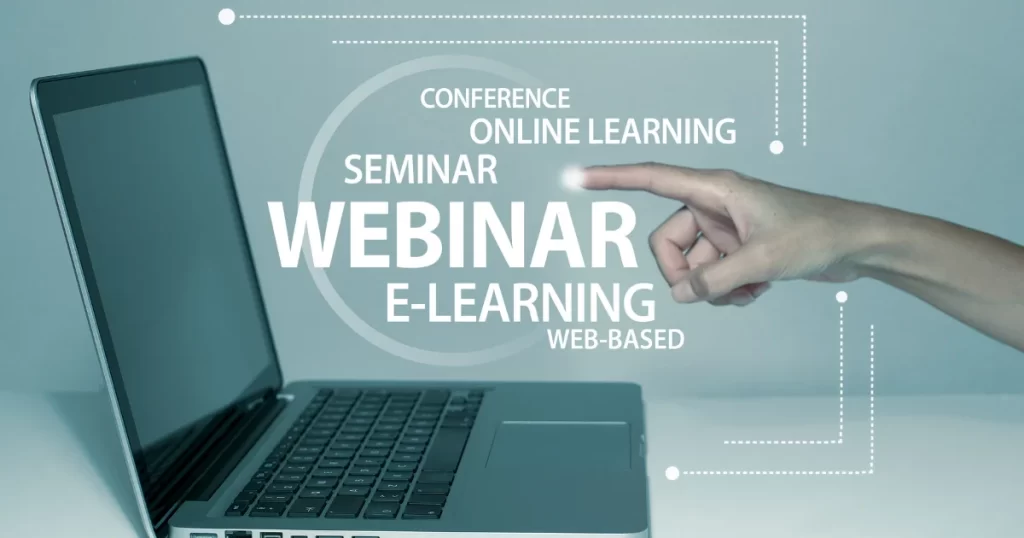
Why Virtual Events Are a Lead Generation Goldmine
Virtual events are like the lovechild of a TED Talk and a house party. They’re fun, educational, and an absolute magnet for leads. Why? Because attendees willingly hand over their contact info in exchange for valuable insights. It’s a win-win—you get leads, and they (hopefully) leave smarter.
What to Host (and How to Make It Irresistible)
1. Webinars
- What They Are: Live or pre-recorded presentations on a topic your audience cares about.
- Example: “Masterclass: Lead Generation Strategies That Actually Work in 2025.”
- Pro Tip: Include a live Q&A session at the end. It keeps attendees engaged and makes them feel heard.
2. Live Q&A Sessions
- Great for building trust and showcasing your expertise.
- Promote it as a chance to “pick our brains” on a hot topic.
3. Product Demos
- Perfect for showcasing your product’s features in real-time.
- Bonus points if you can highlight how it solves a specific pain point.
How to Promote Your Virtual Event
Nobody wants to attend a boring event. Make your promotions exciting and impossible to ignore:
- Use countdown timers in your emails to create urgency.
- Share sneak peeks on social media. For example: “Join us this Thursday to learn the secret to doubling your leads!”
- Partner with influencers or industry experts to boost credibility and reach.
Pro Tip: Follow Up Like a Pro
The real magic happens after the event. Send follow-up emails with:
- A recording of the event for those who missed it.
- Links to additional resources or special offers.
- A CTA that keeps the conversation going, like booking a demo or downloading a guide.
7. Explore Influencer Partnerships to Expand Your Reach
Why Influencers Are Your Lead-Gen MVPs
Influencers: the social media royalty everyone wants on their team in 2025. Forget the old-school ads—we’re talking about people with loyal followers who hang on their every word (or post). The right influencer can turn your lead generation campaign into an internet sensation faster than you can say, “#Sponsored.”
How to Find the Right Influencer for Your Brand
1. Prioritize Relevance Over Follower Count
Bigger isn’t always better. A micro-influencer (10K–50K followers) with an engaged niche audience will outperform a celebrity influencer whose followers couldn’t care less about your product.
| Influencer Type | Follower Count | Best For |
|---|---|---|
| Nano-Influencers | 1K–10K | Hyper-local or niche markets |
| Micro-Influencers | 10K–50K | Specialized, loyal audiences |
| Macro-Influencers | 100K–1M | Broader but still targeted reach |
| Mega-Influencers | 1M+ | Massive exposure, but less personalization |
2. Stalk (Professionally, of Course)
- Dive into their content. Are they authentic, or do they sound like a walking billboard?
- Check their engagement rates. If they have 100K followers but only 10 likes per post, run.
3. Align Values
Your brand and the influencer’s values need to match. Partnering with a fitness influencer for your double-chocolate cupcakes? Maybe not the best fit.
Collaboration Ideas That Generate Leads
1. Sponsored Posts
A classic for a reason. The influencer creates a post highlighting your product, complete with a lead-gen CTA like, “Click the link in my bio for a free trial!”
2. Co-Hosted Live Events
- Example: A skincare brand teaming up with a beauty influencer for a live Q&A about winter skin issues.
- Why It Works: Real-time engagement builds trust, and attendees are more likely to provide their contact details.
3. Giveaways
- Simple but effective: “Follow [Brand] and [Influencer], tag 3 friends, and sign up for our newsletter for a chance to win!”
- Bonus: You’ll not only generate leads but also expand your reach as participants share the giveaway.
Pitfalls to Avoid (Yes, There Are Pitfalls)
- Not Vetting the Influencer: Remember, their behavior reflects on your brand. A PR disaster is one scandalous tweet away.
- Overly Scripted Content: Influencers thrive on authenticity. Let them add their personal flair instead of handing them a corporate script.
- Ignoring Metrics: Always track ROI. If an influencer isn’t delivering leads, it’s time to reconsider the partnership.
8. Utilize Analytics Tools for Continuous Optimization
Why Analytics Are Your Lead-Gen Compass
Running campaigns without analytics is like driving blindfolded—it’s bold, but you’re going to crash. Analytics tools let you track, tweak, and turbocharge your lead generation efforts. They’re your backstage pass to understanding what’s working, what’s flopping, and why.
Key Metrics to Track
| Metric | What It Tells You | Why It Matters |
|---|---|---|
| Conversion Rate | % of visitors turning into leads | Measures campaign effectiveness |
| Cost Per Lead (CPL) | How much you’re spending to acquire one lead | Ensures you’re staying within budget |
| Engagement Metrics | Likes, shares, comments, click-through rates | Gauges content appeal |
| Bounce Rate | % of visitors leaving without interacting | Highlights potential issues with your page |
Tools That Should Be in Your Arsenal
1. Google Analytics
The granddaddy of analytics tools. Track website traffic, user behavior, and conversions with ease.
2. HubSpot
Perfect for tracking and automating your lead-gen efforts. Bonus: it integrates with your CRM.
3. Hootsuite Insights
Want to know how your social media is performing? This tool breaks down engagement metrics and audience demographics.
How to Use Analytics for Optimization
1. A/B Testing
Test everything—headlines, CTAs, colors, layouts. If “Download Now” performs better than “Get Started Today,” you’ll know.
2. Funnel Analysis
Follow your leads’ journey from discovery to conversion. Spot where they’re dropping off and fix the leaks.
3. Regular Reporting
Don’t just glance at the numbers—analyze them. If your CPL is creeping up, dig into why and adjust your strategy.
9. Embrace Interactive Content Formats

Why Interactive Content Is the Future of Lead Generation
In a world drowning in static posts, interactive content is the shiny object that grabs attention. It’s not just about consuming information—it’s about engaging with it. And when users engage, they’re more likely to convert.
Types of Interactive Content (and Why They Work)
1. Polls
Quick, easy, and irresistible. Use polls to spark conversations and gather insights while keeping your audience entertained.
- Example: “What’s your biggest lead-gen challenge? A) Finding leads, B) Nurturing leads, C) Closing deals.”
- Why It Works: Poll participants are more likely to engage with follow-up content.
2. Quizzes
People love learning about themselves. Use that to your advantage.
- Example: “What’s Your Lead Generation Personality? Take the Quiz!”
- CTA: Collect email addresses to share quiz results.
3. Contests
Everyone loves free stuff. Host a contest to drive engagement and collect leads.
- Example: “Win a Free Month of Our Service! Enter by signing up here.”
- Why It Works: Contests create buzz and attract new audiences.
How to Make Interactive Content Work for You
- Incorporate Lead Capture Forms: Always collect contact details before sharing results or announcing winners.
- Use Visuals: Bright, eye-catching graphics can make your interactive content more appealing.
- Promote Like Crazy: Share your polls, quizzes, and contests across all your platforms. The more eyes, the better.
Table: Interactive Content Ideas
| Format | Example | Lead-Gen Potential |
|---|---|---|
| Poll | “What’s Your Biggest Marketing Struggle?” | High: Sparks engagement and insights |
| Quiz | “Which Lead-Gen Strategy Suits You Best?” | High: Requires email for results |
| Contest | “Win a Year of Free Access!” | Very High: Drives sign-ups and shares |
10. Avoid Common Pitfalls
Even the best lead-generation strategies can go belly-up if you fall into these all-too-common traps. Let’s dissect the missteps that could sabotage your campaign faster than you can say, “Why isn’t this working?”
Over-Promoting: The Line Between Enthusiasm and Desperation
Raise your hand if you’ve ever been spammed by a brand that really wanted you to buy something. (Don’t worry, we’ve all been there.) Over-promoting is a surefire way to alienate your audience. Here’s how to recognize—and avoid—this cringe-worthy behavior:
How It Happens:
- Posting constant “BUY NOW!” messages like a digital carnival barker.
- Sending daily emails that scream, “Still thinking? Here’s another offer!”
- Hijacking your audience’s social media feeds with ads, ads, and more ads.
The Fallout:
Over-promotion doesn’t just annoy people—it makes them distrust your brand. Instead of seeing you as a helpful resource, they see you as that pushy salesperson who just doesn’t get it.
How to Fix It:
- Use the 80/20 rule: 80% of your content should educate, entertain, or engage; only 20% should directly promote.
- Focus on value-driven content: Instead of, “Buy this!”, try, “Here’s how this solves your problem.”
- Space out your campaigns: Give people breathing room to miss you.
Ignoring Data: Flying Blind Is a Recipe for Disaster
Let’s be honest—gut feelings are great for picking pizza toppings, not running lead-generation campaigns. If you’re ignoring your analytics, you’re essentially tossing money into a black hole and hoping for the best. Spoiler alert: That never ends well.
What You’re Missing:
- Which campaigns are actually driving leads.
- Where your audience is dropping off in the funnel.
- Whether your CPL (cost per lead) is sky-high or just right.
Why It Happens:
- Analytics tools seem intimidating. (Pro tip: They’re not.)
- You’re too focused on execution and forget to analyze performance.
- You think, “The numbers will figure themselves out.” (They won’t.)
The Fix: Become a Data Detective
Data is your BFF in lead generation. Here’s how to embrace it:
- Set Clear KPIs: Define success metrics before you start. Whether it’s a CPL target, click-through rate, or conversion rate, know what you’re aiming for.
- Use Analytics Tools Religiously: Tools like Google Analytics, HubSpot, and SEMrush can help you track and optimize. If you’re not using them, you’re missing half the picture.
- Review and Adjust: Think of your strategy as a living, breathing organism. If something isn’t working, pivot. That’s the beauty of digital marketing—you can adapt in real time.
| Data to Track | Why It Matters | What to Do If It’s Off |
|---|---|---|
| Conversion Rate | Tells you how effective your campaigns are | Test new CTAs, landing pages, or offers |
| Traffic Sources | Shows where your leads are coming from | Double down on high-performing channels |
| Cost Per Lead (CPL) | Ensures you’re spending efficiently | Adjust targeting or ad spend |
The All-Too-Common “Set It and Forget It” Syndrome
Running a lead-generation campaign isn’t like roasting a chicken—you can’t just set it, walk away, and hope for the best. This mistake comes in two flavors:
- Overconfidence: Assuming your campaign is perfect from the start.
- Underinvestment: Failing to monitor and optimize because, well, you’re busy.
Why It’s a Problem:
The digital landscape changes faster than a toddler’s mood swings. What worked yesterday might flop today. If you’re not constantly monitoring, tweaking, and improving, you’re leaving leads—and money—on the table.
How to Stay on Top of It:
- Schedule Weekly Reviews: Block time to analyze performance metrics.
- Test New Strategies Regularly: A/B test everything from headlines to images.
- Stay Updated: Keep tabs on trends and algorithm updates. If Instagram decides reels are the new king, you’d better bow down.
Forgetting to Nurture Leads: The “Ghost Them and Hope” Strategy
Congratulations, you’ve captured a lead! Now what? Ignoring your leads after you’ve hooked them is like swiping right on a dating app, starting a conversation, and then vanishing. It’s not a great look.
Why Leads Go Cold:
- Your follow-up emails are generic or nonexistent.
- You’re not providing value after the initial interaction.
- They forget about you because, well, someone else was more interesting.
How to Keep Leads Warm:
- Automated Email Sequences: Send a series of value-packed emails to nurture interest.
- Retargeting Ads: Stay top-of-mind with gentle reminders on social media.
- Engaging Content: Share case studies, success stories, or how-to guides.
Conclusion
Lead generation in 2025 isn’t just a strategy—it’s an art form. Sure, you could wing it, but why settle for mediocrity when you could master the game? Avoid these pitfalls, lean into data, and focus on delivering value over all else.
Think of your lead-gen efforts like a relationship. It’s not about shouting, “LOVE ME!” at the top of your lungs—it’s about proving you’re worth their time, trust, and, eventually, their email address. Now go forth and generate leads like the marketing rockstar you are!

